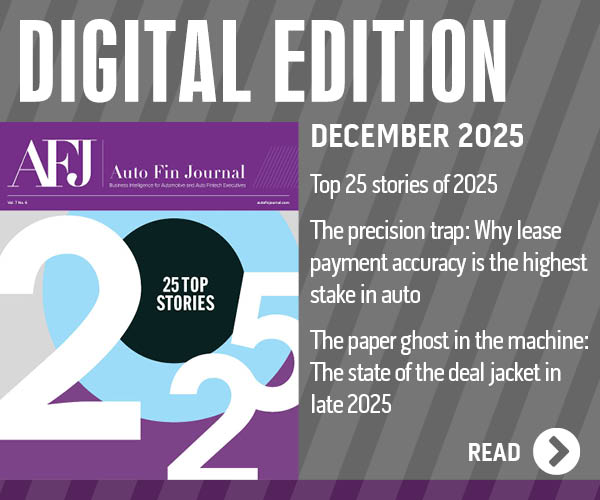Survey: Controlling cloud costs burden nearly 50% of businesses

Anodot chief executive officer and co-founder David Drai. Images courtesy of the company.
By subscribing, you agree to receive communications from Auto Remarketing and our partners in accordance with our Privacy Policy. We may share your information with select partners and sponsors who may contact you about their products and services. You may unsubscribe at any time.
Some finance companies might be seeing a part of their operational costs rising sky high, so to speak.
According to a new report published on Wednesday by Anodot, nearly half of businesses — 49% to be exact — find it difficult to get cloud costs under control, and 54% believe their primary source of cloud waste is a lack of visibility into cloud usage.
Anodot said the findings highlight an ongoing visibility crisis in which organizations are struggling to gain appropriate insights into the breakdown of cloud costs and efficiency of cloud use and therefore cannot effectively reduce wasted spend — even as cloud migration continues to rise and cutting costs is a priority.
The report is based on a survey of 131 U.S.-based IT directors and executives.
Anodot’s State of Cloud Cost Report revealed that the pandemic greatly accelerated many companies’ shift to the cloud, and the latest survey confirms that the transition is continuing as businesses continue to appreciate the agility and scalability the cloud provides.
The survey showed 91% of respondents reported they currently have IT infrastructure in the cloud, while 60% said that migrating more workloads to the cloud is their top cloud initiative in the coming year.
Subscribe to Auto Remarketing to stay informed and stay ahead.
By subscribing, you agree to receive communications from Auto Remarketing and our partners in accordance with our Privacy Policy. We may share your information with select partners and sponsors who may contact you about their products and services. You may unsubscribe at any time.
As enterprises continue to face high monthly cloud bills — with cloud costs ranking second only to payroll in terms of business expenses for many — Anodot indicated visualizing costs, optimizing spend and reducing wasted dollars are top priorities, especially in the wake of a slowing economy.
However, Anodot acknowledged a significant portion of these inflated cloud bills could have been avoided.
The report indicated 44% of respondents said that at least one-third (33%) of their cloud spend is wasted each year.
Visibility is the main culprit, according to the survey, as the majority of executives surveyed (53%) said gaining visibility into cloud usage and costs is their top challenge for controlling spend and reducing waste.
Anodot mentioned one-fifth (19%) said they lack the ability to manage their cloud budget due to insufficient visibility into cloud usage.
The survey also pointed out cloud costs are also becoming increasingly complex to track and understand, also leading to misspending since 46% of executives reported that overprovisioning is a primary source of cloud waste, while 45% blamed cloud assets’ fragmentation across teams and vendors.
Other additional findings included:
—Over a third of participants (37%) have been surprised by their cloud costs or had an incident related to cloud costs.
—When asked to choose the top challenges in controlling cloud costs, respondents could select multiple options and 53% said the key challenge is gaining true visibility into cloud usage and costs. Another 50% said complex cloud pricing, while 49% said complex, multi-cloud environments.
—28% of respondents said it takes weeks or months to notice a spike in cloud costs – no improvement in the average time to detect incidents since 2021.
“Shifting to the cloud requires a delicate balance between the speed of workload migration and cost control,” Anodot chief executive officer and co-founder David Drai said in a news release. “Today, cloud cost management — which is all the more crucial as businesses strive to mitigate wasted resources and shore up revenues — should be based on four key elements: visibility, insights, recommendations and automated actions.
“Enterprises that are leveraging AI and ML to control and optimize their cloud environments are seeing immediate results and reduced waste, unlocking the true value the cloud has always promised,” Drai added.
The full Anodot report can be downloaded from this website.


